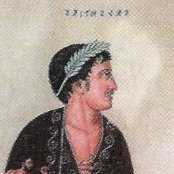Cerca nel Forum
Risultati per Tag 'castro'.
Trovato 2 risultati
-

Tre Forti romani d’espansione scoperti con le immagini aeree di internet.
Vel Saties ha aggiunto un nuovo link in Storia ed archeologia
Non è la prima volta e non sarà nemmeno l’ultima in cui immagini satellitari permettono di scoprire siti nascosti sottoterra. Ma io ogni volta impazzisco letteralmente… Tre Forti romani d’espansione scoperti con le immagini aeree di internet. Ora si scende e si scava -> https://www.stile...- 9 commenti
-
- 2
-

-

-
- romani
- accampamenti
-
(e altri 2 tag)
Taggato come:
-

Ricerca del libro: Medaille de Louis XIV, Jean-Paul DIVO, 1982
mariov60 ha aggiunto un nuovo link in Medaglistica
Buongiorno a tutti Volendo approfondire lo studio della medaglia che rappresenta il profilo giovanile di Luigi XIV e celebra la pace del 1644 fra Papa Urbano VIII e il Duca di Parma e alleati con la descrizione seguente: Sono alla ricerca di una copia pdf o jpg delle pagine che n...- 2 commenti
-
- pace di castro
- medaglia 1644
-
(e altri 2 tag)
Taggato come:
Lamoneta.it
La più grande comunità online di numismatica e monete. Studiosi, collezionisti e semplici appassionati si scambiano informazioni e consigli sul fantastico mondo della numismatica.
Il network
Hai bisogno di aiuto?


